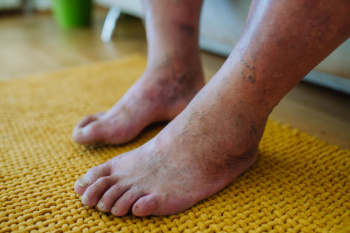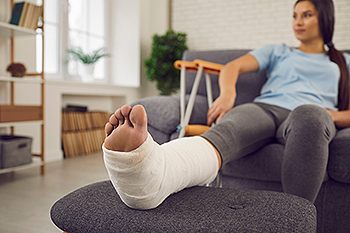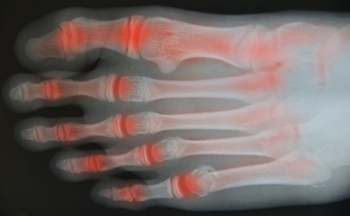
Foot problems related to diabetes can progress quickly, and without timely attention, they may threaten the health of the limb. Podiatrists are trained to spot early warning signs that others might overlook, such as subtle skin changes, areas of excess pressure, or reduced blood flow. They use advanced wound care methods, customized pressure relief strategies, and targeted treatments to encourage healing and prevent further damage. Protective footwear and specialized inserts may be recommended to reduce stress on high-risk areas. Regular checkups allow them to monitor healing progress and adjust care as needed, often working alongside other medical specialists. Through their expertise, many serious complications can be avoided, helping patients maintain mobility and independence. If you have diabetes and notice changes in your feet or ankles, it is suggested that you are under the care of a podiatrist who can help you to manage this serious condition.
Diabetic foot care is important in preventing foot ailments such as ulcers. If you are suffering from diabetes or have any other concerns about your feet, contact Sharmila Das-Wattley, DPM from Home Wound Healing. Our doctor can provide the care you need to keep you pain-free and on your feet.
Diabetic Foot Care
Diabetes affects millions of people every year. The condition can damage blood vessels in many parts of the body, especially the feet. Because of this, taking care of your feet is essential if you have diabetes, and having a podiatrist help monitor your foot health is highly recommended.
The Importance of Caring for Your Feet
- Routinely inspect your feet for bruises or sores.
- Wear socks that fit your feet comfortably.
- Wear comfortable shoes that provide adequate support.
Patients with diabetes should have their doctor monitor their blood levels, as blood sugar levels play such a huge role in diabetic care. Monitoring these levels on a regular basis is highly advised.
It is always best to inform your healthcare professional of any concerns you may have regarding your feet, especially for diabetic patients. Early treatment and routine foot examinations are keys to maintaining proper health, especially because severe complications can arise if proper treatment is not applied.
If you have any questions, please feel free to contact our office located in Florida . We offer the newest diagnostic and treatment technologies for all your foot care needs.

A broken ankle occurs when one or more bones in the ankle joint fracture due to trauma or excessive force. Diagnosis typically involves a physical exam and imaging studies to determine the severity and type of fracture. Common types include a Pott’s fracture, which involves the fibula near the ankle, and an avulsion fracture, where a small piece of bone is pulled away by a ligament or tendon. Symptoms include sudden pain, swelling, bruising, and difficulty bearing weight. Causes range from sports injuries to falls or accidents. A podiatrist can assess the injury, provide stabilization, and guide treatment. If you suspect you have fractured your ankle, it is suggested that you schedule an immediate podiatry visit for appropriate treatment solutions.
Broken ankles need immediate treatment. If you are seeking treatment, contact Sharmila Das-Wattley, DPM from Home Wound Healing. Our doctor can provide the care you need to keep you pain-free and on your feet.
Broken Ankles
A broken ankle is experienced when a person fractures their tibia or fibula in the lower leg and ankle area. Both of these bones are attached at the bottom of the leg and combine to form what we know to be our ankle.
When a physician is referring to a break of the ankle, he or she is usually referring to a break in the area where the tibia and fibula are joined to create our ankle joint. Ankles are more prone to fractures because the ankle is an area that suffers a lot of pressure and stress. There are some obvious signs when a person experiences a fractured ankle, and the following symptoms may be present.
Symptoms of a Fractured Ankle
- Excessive pain when the area is touched or when any pressure is placed on the ankle
- Swelling around the area
- Bruising of the area
- Area appears to be deformed
If you suspect an ankle fracture, it is recommended to seek treatment as soon as possible. The sooner you have your podiatrist diagnose the fracture, the quicker you’ll be on the way towards recovery.
If you have any questions, please feel free to contact our office located in Florida . We offer the newest diagnostic and treatment technologies for all your foot care needs.

Foot arthritis is a condition where the joints in the foot become inflamed, leading to stiffness, swelling, and pain. It may result from wear and tear, autoimmune diseases, or injury. Flare-ups can be triggered by overexertion, stress, infection, or changes in activity, often causing increased joint pain and reduced mobility. These episodes may disrupt daily life and make walking or standing uncomfortable. A podiatrist can help manage symptoms through customized treatment plans, supportive footwear, orthotics, and lifestyle guidance. If you are experiencing ongoing joint pain in your feet, it is suggested that you consult a podiatrist who can provide effective relief and management techniques.
Arthritis can be a difficult condition to live with. If you are seeking treatment, contact Sharmila Das-Wattley, DPM from Home Wound Healing. Our doctor can provide the care you need to keep you pain-free and on your feet.
Arthritic Foot Care
Arthritis is a joint disorder that involves the inflammation of different joints in your body, such as those in your feet. Arthritis is often caused by a degenerative joint disease and causes mild to severe pain in all affected areas. In addition to this, swelling and stiffness in the affected joints can also be a common symptom of arthritis.
In many cases, wearing ill-fitting shoes can worsen the effects and pain of arthritis. Wearing shoes that have a lower heel and extra room can help your feet feel more comfortable. In cases of rheumatoid arthritis, the arch in your foot may become problematic. Buying shoes with proper arch support that contour to your feet can help immensely.
Alleviating Arthritic Pain
- Exercises that stretch the foot can prevent further pain and injury and increase mobility
- Most of the pain can be alleviated with anti-inflammatory drugs, heat, and topical medications
- Massages can help temporarily alleviate pain.
It is best to see your doctor for the treatment that is right for your needs and symptoms. Conditions vary, and a podiatrist can help you determine the right method of care for your feet.
If you have any questions please feel free to contact our office located in Florida . We offer the newest diagnostic tools and technology to treat your foot and ankle needs.

